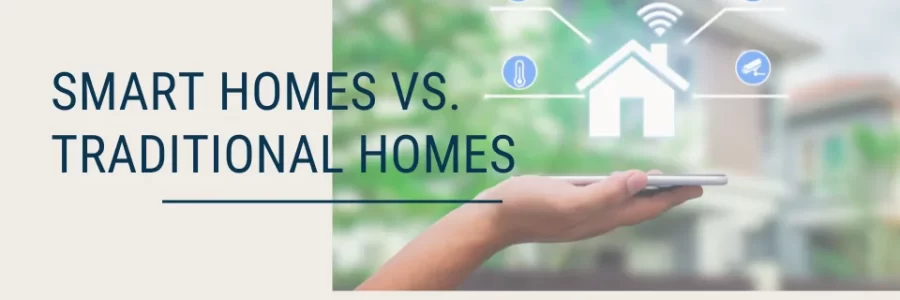Smart electrical appliances differ from traditional ones in several key ways, primarily due to their integration with modern technologies like the Internet of Things (IoT), sensors, and automation. Here’s how they compare:
1. Connectivity
- Smart Appliances: These are connected to the internet or local networks, allowing users to control and monitor them remotely via smartphone apps, voice assistants (e.g., Alexa, Google Assistant), or other connected devices. For example, smart refrigerators can be controlled via an app to adjust temperature settings or check the contents.
- Traditional Appliances: Do not have internet or network connectivity. They are operated manually, typically with physical switches, dials, or buttons.
2. Automation and Control
- Smart Appliances: Feature automation capabilities that allow them to adjust settings based on user preferences, environmental conditions, or time of day. For example, a smart thermostat can automatically adjust the room temperature based on your routine or when you’re away.
- Traditional Appliances: Require manual operation for every task. Users must adjust settings manually and monitor the appliance’s operation.
3. Energy Efficiency
- Smart Appliances: Often come with energy-saving features such as scheduling, monitoring power usage, and adaptive performance. For example, smart washing machines can optimize wash cycles based on load size, saving water and energy.
- Traditional Appliances: Lack the ability to adjust settings for optimal energy use, which can lead to unnecessary power consumption.
4. User Interface
- Smart Appliances: These appliances have advanced user interfaces, often through touchscreens, mobile apps, or voice control. Many can be integrated with smart home systems for seamless operation.
- Traditional Appliances: Generally have simpler user interfaces, such as physical buttons, knobs, or switches with limited functionality.
5. Remote Monitoring and Alerts
- Smart Appliances: Allow users to receive real-time updates, notifications, and alerts about their operation. For example, a smart fridge can alert you when the door is left open or when a filter needs replacing.
- Traditional Appliances: Lack remote monitoring. Users have to physically check the appliance for issues or performance.
6. Data Collection and Feedback
- Smart Appliances: Collect data on their usage patterns, performance, and efficiency. This data can help users make better decisions about usage and maintenance. For example, smart refrigerators track food items and suggest recipes based on what’s available.
- Traditional Appliances: Do not collect or provide feedback beyond basic operation and maintenance needs.
7. Voice and Remote Control Integration
- Smart Appliances: Can be integrated with voice assistants like Amazon Alexa, Google Assistant, or Apple Siri, allowing users to control them using voice commands. For instance, you can ask a smart oven to preheat while you’re on your way home.
- Traditional Appliances: Do not support voice control or remote operation; they require physical interaction.
8. Customization and Personalization
- Smart Appliances: Often offer customizable settings that can be tailored to the user’s preferences, such as creating presets for a smart coffee maker to brew at a specific time or a washing machine to run with specific temperature settings.
- Traditional Appliances: Offer limited or no customization. Settings are usually preset, and customization, if available, is minimal.
9. Maintenance and Updates
- Smart Appliances: Many have built-in diagnostics that can detect problems early and alert the user. Additionally, they can receive software updates to improve performance or add new features.
- Traditional Appliances: Maintenance typically involves manual troubleshooting, and they cannot receive software updates or automatically detect faults.
10. Cost
- Smart Appliances: Tend to be more expensive upfront due to the advanced technology and features they include. However, their energy efficiency and automation may result in cost savings over time.
- Traditional Appliances: Usually have a lower initial cost as they lack the additional technology, connectivity, and smart features.
Examples of Smart vs. Traditional Appliances:
- Smart Refrigerator: Can monitor food inventory, suggest recipes, and alert you when items are about to expire. It can also be controlled remotely via a mobile app.
- Traditional Refrigerator: Simply cools food and drinks without any additional smart features or connectivity.
- Smart Thermostat: Learns your preferences and adjusts heating or cooling automatically. It can be controlled remotely and provides energy consumption reports.
- Traditional Thermostat: Requires manual adjustment and cannot be controlled remotely.
Smart appliances offer convenience, efficiency, and remote control capabilities, while traditional appliances are simpler, rely on manual operation, and lack connectivity features. Smart appliances enhance user experience with automation, real-time monitoring, and the ability to integrate with other smart home systems, making them a modern choice for those seeking convenience and energy efficiency.














